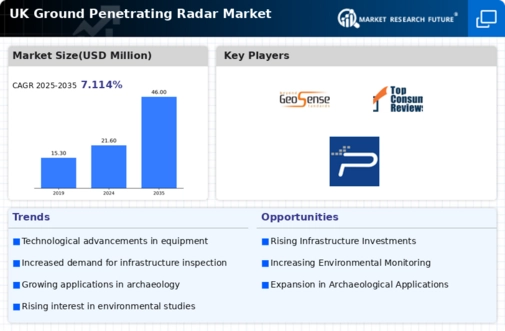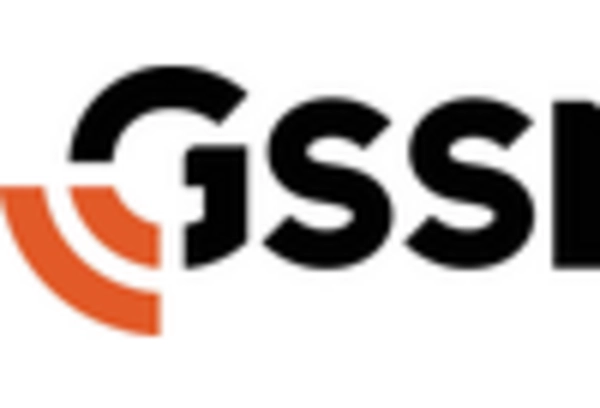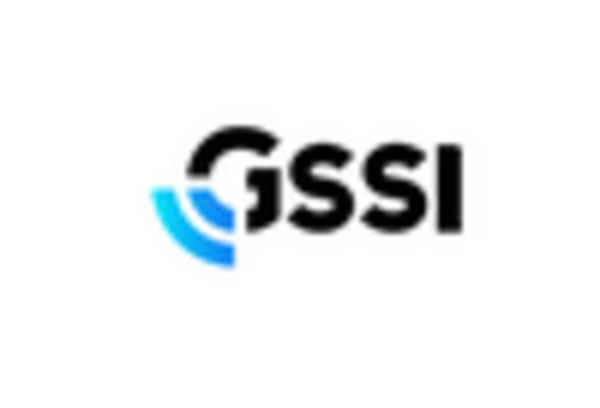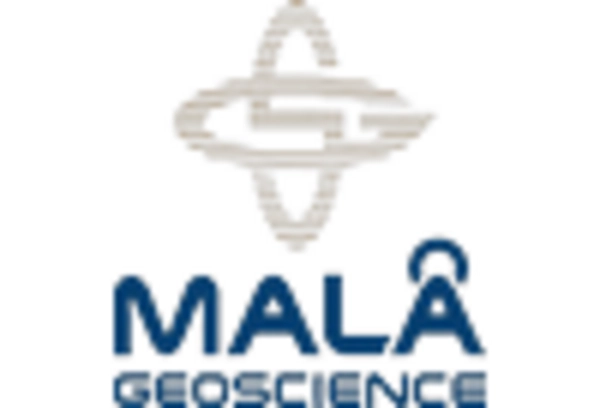Advancements in GPR Technology
Technological innovations are significantly influencing the ground penetrating-radar market. Recent advancements in GPR systems, such as improved data processing algorithms and enhanced imaging capabilities, are making the technology more accessible and effective. These innovations allow for higher resolution images and faster data acquisition, which are crucial for various applications, including archaeology, construction, and environmental studies. The UK market is witnessing a shift towards more sophisticated GPR systems that integrate artificial intelligence for data analysis. This trend is expected to boost the market as users seek to leverage these advancements for more accurate subsurface assessments, thereby driving growth in the ground penetrating-radar market.
Growing Environmental Concerns
Environmental awareness is becoming a pivotal driver for the ground penetrating-radar market in the UK. As the focus on sustainable practices intensifies, industries are seeking non-invasive methods to assess environmental conditions. GPR technology allows for the detection of contaminants and the mapping of subsurface features without disturbing the ground. This is particularly relevant in urban areas where soil contamination is a concern. The UK government has implemented stringent regulations regarding environmental protection, which encourages the use of GPR for site assessments. The market is projected to grow as more companies adopt GPR to comply with these regulations, thereby enhancing the ground penetrating-radar market.
Increased Infrastructure Development
The ground penetrating-radar market is experiencing a surge due to the ongoing infrastructure development across the UK. With the government investing heavily in transportation, utilities, and urban development, the demand for non-invasive subsurface investigation techniques is rising. Ground penetrating radar (GPR) is increasingly employed to locate utilities, assess soil conditions, and ensure the integrity of existing structures. The UK government has allocated approximately £100 billion for infrastructure projects over the next decade, which is likely to drive the adoption of GPR technology. This investment not only enhances safety but also reduces the risk of damaging underground assets during construction, thereby propelling the ground penetrating-radar market forward.
Expansion of Utility Mapping Services
The expansion of utility mapping services is a crucial driver for the ground penetrating-radar market in the UK. As urban areas become more densely populated, the need for accurate mapping of underground utilities is paramount. GPR technology provides a reliable solution for identifying and mapping these utilities, which is essential for urban planning and construction projects. The UK construction sector is projected to grow by 3.5% annually, further increasing the demand for utility mapping services. This growth is likely to enhance the adoption of GPR technology, as companies seek efficient methods to avoid utility strikes and ensure project safety, thereby propelling the ground penetrating-radar market.
Rising Demand in Archaeology and Heritage Preservation
The ground penetrating-radar market is benefiting from an increasing interest in archaeology and heritage preservation in the UK. GPR is a non-invasive tool that allows archaeologists to explore sites without excavation, preserving the integrity of historical artifacts. As public interest in cultural heritage grows, funding for archaeological projects is also on the rise. The UK government and various organizations are investing in heritage conservation, which is likely to increase the demand for GPR technology. This trend not only supports the preservation of historical sites but also enhances the visibility of the ground penetrating-radar market within academic and research institutions.
















Leave a Comment